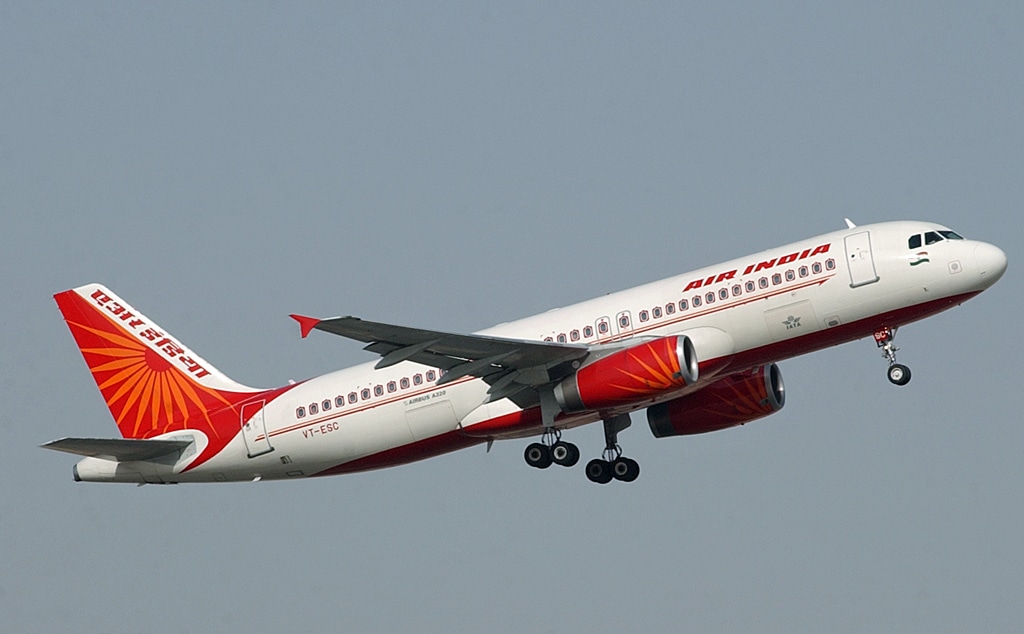Aerospace
Regulator fines Air India $37,000 for unruly passenger incident

Many travelers were outraged by the event in which a drunk passenger in Air India’s business class urinated on fellow passengers, and it also raised concerns about the airline standards. Now According to news from the Times of India. On Friday, the Directorate General of Civil Aviation (DGCA) fined Air India Rs 30 lakh for the drunken urination episode on board a flight from New York to Delhi, in which the airline disregarded its policies on dealing with disruptive passengers. The pilot-in-license commands have been put on three-month suspension.
According to the information gathered here, the DGCA is conducting an inquiry on both ends after cases were filed by both sides. It was determined that the airline handled the incident improperly, causing the victim to experience the worst possible scenario. If the offender had been detained immediately after the offense, the case would have been treated correctly; however, it wasn’t until the victim complained that the matter was given serious consideration. Air India gets penalized for the mistakes after taking into account all the factors.
“On January 4, 2023, the DGCA was made aware of a passenger misbehavior incident that occurred on the AI-102 flight from New York to New Delhi on November 26, 2022. According to reports, a male passenger discharged himself on a female passenger.
The DGCA addressed show-cause letters to each of the flight’s pilots and cabin crew members, as well as to the accountable manager of Air India, the director of AI’s in-flight services, asking them to justify why no enforcement action should be taken against them for breaking regulatory standards. In a statement made public on Friday, the DGCA claimed to have investigated Air India’s written answer and the parties concerned.
“As a result, the following enforcement actions have been put into practice in this situation: Due to the violation of the pertinent DGCA Civil Aviation Requirements, Air India was fined Rs. 30 lakh. If the pilot-in-command of the aforementioned flight does to carry out his duties in accordance with Rule 141 of the 1937 Aircraft Rules and any relevant DGCA Civil Aviation Requirements, his license will be suspended for three months (03 months).
Air India’s Director-in-Flight Services was fined Rs. 3 lakhs for not carrying out her responsibilities in compliance with the pertinent DGCA Civil Aviation Requirements.”
The airline has already placed the passenger (Mishra) on its “No Fly List.” The director general of civil aviation has received a copy of the Internal Committee report from Air India, who has also informed other domestic carriers, according to a spokeswoman for the airline.
The national no-fly list, which is maintained by the Directorate General of Civil Aviation (DGCA), temporarily prevents rowdy passengers from boarding planes operated by all Indian carriers. Mishra is now only prohibited from boarding Air India aircraft.

Aerospace
Boeing Transfers Rocket Stage to NASA, Paving Way for Human Moon Mission

Boeing has achieved a significant milestone by providing NASA with the second core stage of the Space Launch System (SLS) rocket.
This crucial component, crafted at NASA’s Michoud Assembly Facility (MAF), is set to propel the Artemis II crew into lunar orbit, marking humanity’s return to deep space after a 50-year hiatus.
The monumental Boeing-built rocket stage, the largest element of the Artemis II mission, will embark on a journey aboard the Pegasus barge, traveling 900 miles to NASA’s Kennedy Space Center.
Comparison of two legendary aircraft B777x vs B747 aircraft:Click here
Upon arrival, it will be meticulously integrated with other essential Artemis II components, including the upper stage, solid rocket boosters, and NASA’s Orion spacecraft within the iconic Vehicle Assembly Building. This intricate integration process is a vital step toward the eagerly anticipated Artemis II launch, slated for 2025.
“Boeing-built products helped land humankind on the moon in 1969, and we’re proud to continue that legacy through the Artemis generation,” remarked Dave Dutcher, vice president and program manager for Boeing’s SLS program. “Together, with NASA and our industry partners and suppliers, we are building the world’s most capable rocket and paving the way to deep space through America’s rocket factory in New Orleans.”
NASA, Lockheed Martin Reveal X-59 Quiet Supersonic Aircraft:Click here
The delivery of Core Stage 2 marks a significant achievement in the evolution of the SLS rocket. Towering over 200 feet and powered by four RS-25 engines, this core stage, coupled with two solid-fueled booster rockets, will generate a staggering 8.8 million pounds of thrust. This immense power is crucial to launching Artemis II and future missions into the vast expanse of space.
The SLS rocket stands unparalleled in its capability to transport both crew and substantial cargo to the moon and beyond in a single launch. Its extraordinary capacity will facilitate the delivery of human-rated spacecraft, habitats, and scientific missions to destinations including the moon and Mars, ushering in a new era of space exploration.
-

 Travel1 week ago
Travel1 week agoAir India to Expand US Operations with Three New Routes After a Decade
-

 Travel2 weeks ago
Travel2 weeks agoWhy We Should Avoid These Stamps in a Passport
-

 Airlines1 month ago
Airlines1 month agoInvestigations Reveal Fake Chinese Titanium in Boeing and Airbus Jets
-

 Tech4 weeks ago
Tech4 weeks agoChina’s CATL Plans 1,800-Mile Electric Plane Launch by 2027
-

 Airport3 days ago
Airport3 days agoTop 10 Largest Airports in the World by Size
-

 Aerospace4 weeks ago
Aerospace4 weeks agoChina’s Fighter Jets Turn Wings into Autonomous Drones
-

 Airlines4 days ago
Airlines4 days agoAir India Rolls Out A350s for Delhi-New York JFK and Newark Routes
-

 Defence3 weeks ago
Defence3 weeks agoBoeing Enhances Chinook with New Engines and Block II Upgrades at $96 Million







